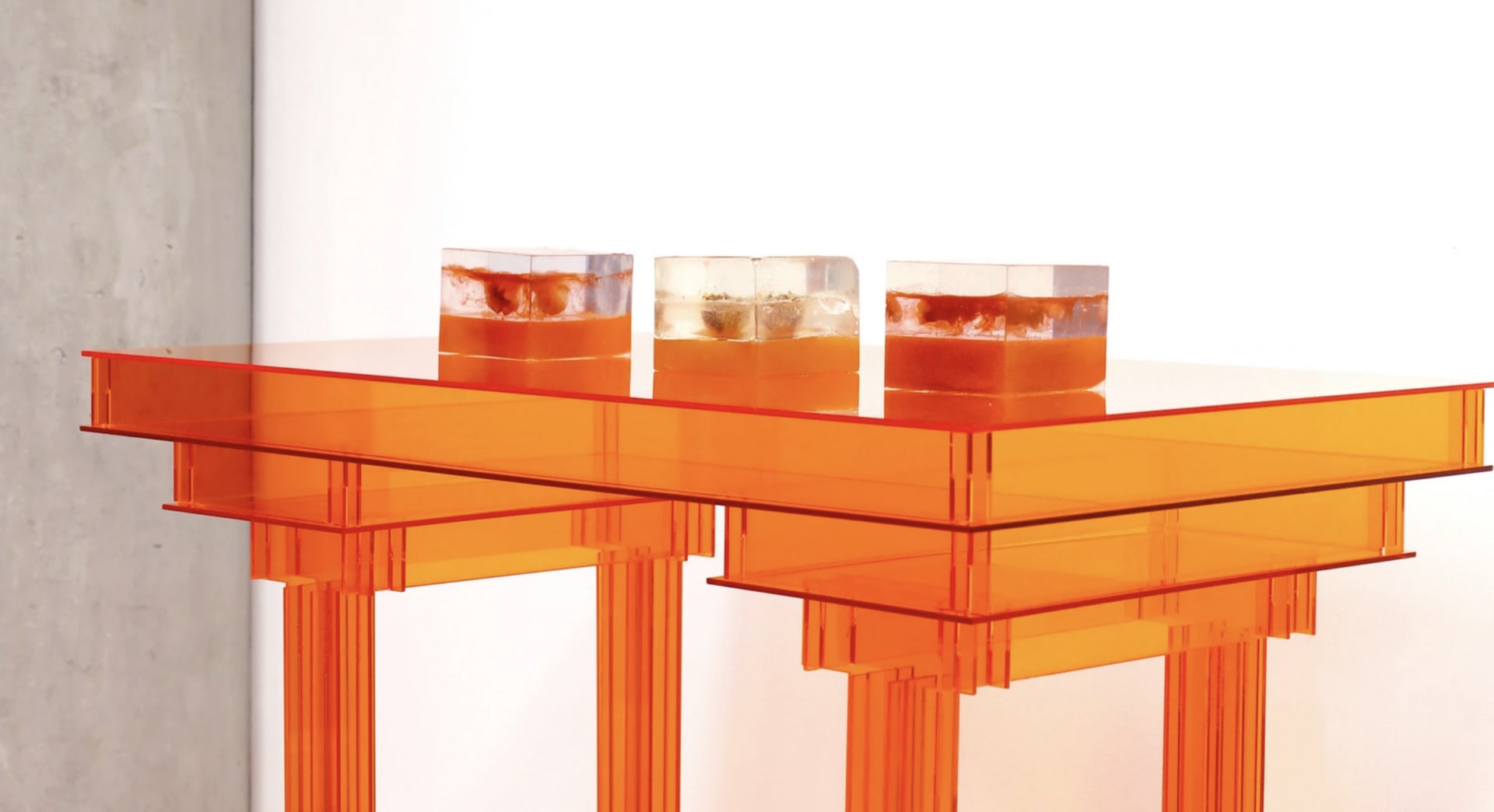Cyan D’Anjou (b. 2000, NL/US) is an experiential sculpture and media artist whose work takes on a speculative quality as she envisions the potential impacts of current technological advancements and the information economy on our societal fabric–which she often expresses in the form of interactive installations, audiovisual experiences, and sculptural designs situated within a conceptual world-building narrative.
With a previous background in technology, design, and innovation ethics from Stanford University, she creates tactile experiences around AI’s growing presence in our everyday and the subsequent cultural, anthropologic, and psychological changes that follow the normalization of data capitalism in our environments. Cyan is particularly interested in investigating behavioral shifts as we face a point of reckoning the declining state of our climate while humans’ relationships with the physical world becomes more blurred.
Her works have been exhibited internationally including at the High Museum of Art (Atlanta, US), SOMArts (San Fransisco, US), Saatchi Gallery (London, UK), Centre Pompidou (Paris, FR), and Sonsbeek ‘16 (Arnhem, NL).
EDUCATION
2023 Royal College of Art, MA Information Experience Design
2022 Stanford University, BS Human Immersive Design Engineering
UPCOMING SHOWS
Oct 2023 ReA! Arte Fair 2023, Fabbrica del Vapore, Milan, IT
Health as Currency, Embassy of Health, DDW ’23, Eindhoven, NL
Aug 2023 Figures 2023, CICA Museum, Seoul, KR
Jul 2023 Beyond a Priori, Seasons Gallery, London, UK
SELECTED RECENT EXHIBITIONS
2023 Brink, 2030 Collective, RCA Hanger Gallery, London, UK
Welcome to the Uncanny, Athens Digital Arts Festival, Athens, GR
IRCAM Forum, Centre Pompidou, Paris, FR
Murmurations, RCA Kensington Theater, London, UK
Climate 20XX, Orleans House Gallery, Richmond, UK
2022 Multifaceted, SOMArts, San Francisco, USA
2020 New Dimensionality, Center for Computer Research, Stanford, USA















